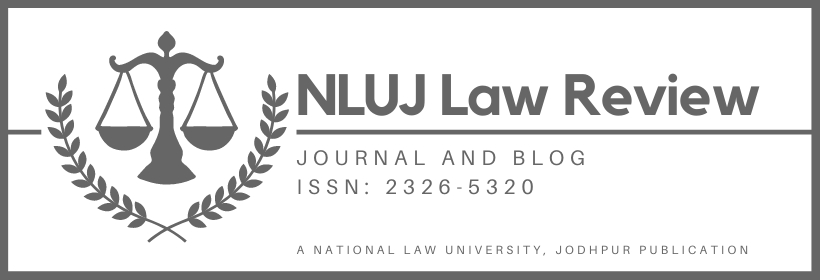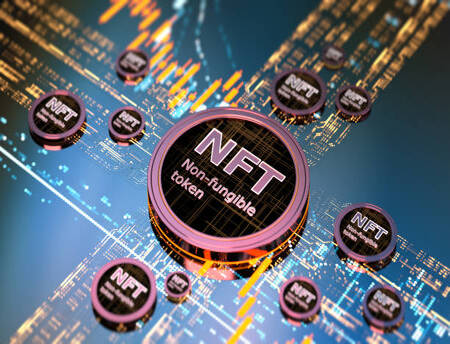The Securities and Exchange Board of India (“SEBI”) has always understood the need to curb the cases of insider trading in India as, in the past, many such instances have stirred up the entire structure and system of the securities market. To keep the confidence of the investors in the market, a need for a regulation was felt that aids the proper functioning of the market, thereby boosting the economy of the country. The SEBI (Prohibition of Insider Trading Regulations), 2015 (“PIT Regulations, 2015”) was a major step taken by SEBI in this direction. However, even after the enactment of the PIT Regulations, 2015, the rate of actually prosecuting and penalizing these traders was noted to be quite disappointing. For instance, as per the Annual Report 2016-17 by SEBI, out of almost 85 insider trading cases taken up by SEBI, merely 25 of them have been completed with a favorable investigation procedure. After analyzing the insider trading cases in the last few years, SEBI has realized that the most daunting task is the establishment of passage of the Unpublished Price Sensitive Information (“UPSI”) and collection of evidence for the same. Several attempts have been made to improve the effectiveness of these investigations, and PIT Regulations, 2019 (“PIT Regulations, 2019”) is a step towards that goal.
As enshrined under the Discussion Paper on amendment to the SEBI (Prohibition of Insider Trading) Regulations, 2015 to provision for an Informant Mechanism (“Amendment”), SEBI has highlighted the difficulties faced by it in finding the primary evidence of the information, since most of these transactions are carried out in a very discrete manner with the help of several intermediaries or proxies. Due to lack of evidence on the commission of the violations, SEBI is unable to move forward in the process of investigation. Thus, a need for a fool-proof system was felt by SEBI as it cannot frame any individual or company without any concrete evidence. In a bid to uphold the sanctity of the securities market and to ensure better tracking, SEBI intended to introduce an informant mechanism that brought informants to the forefront. The amendments were a result of the suggestions made by the Fair Market Conduct Committee set up in August 2017 aimed at reviewing the legal framework for ensuring fair market conduct in the securities market. A similar mechanism has been adopted by various regulators of the world, including the U.S. Securities and Exchange Commission (“SEC”).
The advantages of such a system are immense. The reward system ensures a better opportunity to obtain evidence as the informant himself has the incentive to cooperate with the regulators to provide the appropriate information to the concerned authorities. As a corollary, rewarding such informants disincentivizes the deviant behaviour within organizations or company, and makes the employees more cautious about their own conduct now that the regulator has its ears on their doors. The proposed mechanism has a dedicated reporting window and also seeks to achieve ‘near-absolute confidentiality’ with regards to the identity of the informants in order to alleviate any kind of deterrence stemming out from fear of discrimination, retaliation and prejudice. Moreover, it also provides immunity or lesser penalty to the informants who provide complete and original information on insider trading laws violations. However, due to the country’s situation amid the coronavirus outbreak, the said Amendment has not faced the real test of its effectiveness. The next couple of years are crucial for analyzing and concluding the success of the Amendment.
Analysis of the whistleblower program in the USA
The Informant Mechanism introduced by the PIT Regulations, 2019, is not a sui generis phenomenon, as various jurisdictions have adopted such a system. The system adopted in India is notably similar to the decade-old whistleblower framework in the USA. The Discussion Paper and the PIT Regulations, 2019 seem greatly influenced by the whistleblower protection policy established under the Dodd-Frank Wall Street Reform and Consumer Protection Act (“Dodd Frank Act”), which is based on three pillars of anonymity, bounty, and job security. These three pillars guarantee more participation from workers of organizations as now they can discreetly report insider trading violations to the officials, without letting their jobs getting affected, in return for reasonable considerations.
The Dodd-Frank whistleblower provisions state that individuals who provide the SEC or the Commodity Futures Trading Commission with “original information” about a violation of federal securities laws that eventually lead to a successful enforcement action that recovers money more than $1 million, are entitled to get between 10% and 30% of the recovered amount. Original information has been defined under the Section 78u-6(a)(3) of the 15 U.S. Code. Recently, a cap of $5 million for rewards has been introduced in the Whistleblower Rules, making scholars skeptical about it. For claiming a reward, a whistleblower is required to fulfill three criteria. First, he must provide the information to SEC “voluntarily”, i.e., he must approach SEC without having been asked to do the same. Second, the information should be “original” and third, the information must have “led to” a successful SEC enforcement action resulting in more than $1 million in monetary sanctions.
The SEC’s Office of Whistleblower (“OWB”) has been formed by the SEC to administer the Whistleblower Program. It manages so with the help of a website that provides links to the forms that the whistleblowers are required to fill for their claim and other necessary information relating to the program. The OWB ensures that all the forms received by it are correctly forwarded to the SEC’s Tips, Complaints, and Referrals System for further consideration. Subsequently, the Enforcement Division’s Office of Market Intelligence evaluates the forms submitted by the informants and furthers the investigation procedure by allocating the tips to the appropriate personnel. It is pertinent to note that the recent Amendment in the Whistleblower Rules expands the definition of the word “whistleblower” to include individuals that submit the original information to SEC is “in writing” and must have done so before experiencing any alleged retaliation. It can be observed that PIT Regulations, 2019, also have a similar pattern for reporting the violations where the informants are required to submit the Voluntary Information Disclosure Form to the Office of Informant Protection in the manner prescribed under the regulation.
The OWB forms the link between the body that enforces the program and the whistleblower during the course of the investigation. The procedure for the same has to be in accordance with the Whistleblower Program Rules. Once a conclusion is made in a matter, the OWB posts “Notice of Covered Action” on its website, indicating an invitation of the claim from the whistleblowers. Based on the covered action, they have a total of ninety days to file for their claim using a Form WB-APP. The above-mentioned procedure was adopted in 2011 and has been successful in catching violators in the USA through the tippers from multiple jurisdictions. Since India has adopted a similar framework, after a complete understanding of the ten-year long system in USA, there are specific gaps that must be considered by SEBI.
Recommendation for enhancing the efficiency in India after referring to USA’s framework
The present section provides recommendations from the author that may be considered while implementing the Informant Mechanism in India. Even though the law on insider trading is moving towards creating a robust system, there may be certain things that SEBI may learn from USA’s framework to ensure a more effective mechanism.
I. Higher Monetary Reward
The PIT Regulations, 2019 cap the monetary reward to Rupees 1 crore or 10 percent of the recovered amount, whichever is higher. Such a measure may disincentivize the informants in reporting the violations to the Board; instead, they may approach the violators for a more significant sum of money. It is a known fact that the Indian markets are not free from corruption, and thus the quantum of the reward plays a vital role in the success of the mechanism. When the system was first introduced in 2010, the whistle-blowers were eligible to receive almost 10-30% of the money recovered by SEC from the case. Due to this, the SEC was able to receive as much as $2.5 billion in financial remedies from whistle-blower tips. Even though the provision relating to the quantum of the award was recently amended, Rule 21F-6(c) of the Dodd-Frank still provides that awards of $5 million or less will be granted to whistle-blowers, which is also relatively higher than the cap existing in India. Thus, an increase in the informant’s monetary reward may encourage more applications, thereby helping achieve the principle objective of reducing insider trading enshrined under PIT Regulations, 2019. It will undoubtedly encourage more whistle-blowers to come forward and raise their voices so that the traders’ illegal and malafide acts can be curtailed.
II. Amalgamation of Employer’s Internal Compliance and Informant Mechanism
The non-inclusion of the internal reporting requirement in the USA has been highly criticized over the last couple of years because it allures the informants to circumvent an institution’s internal compliance system in a chase for the rewards from SEC. Even though the whistleblower’s extent of participation in the employer’s internal compliance system is a deciding factor in determining the reward, the issue relating to surpassing internal compliance has been ignored by the whistleblowers. Thus, it is suggested that the internal compliance of the employer should be combined with the mechanism introduced under the PIT Regulations, 2019, for the smooth functioning of the Informant Mechanism. If both the systems are combined, it will aid SEBI in investigating the entire matter.
III. Guidelines to avoid falling prey to a situation leading to Prisoner’s Dilemma
The entire informant system is based on the cooperation of an individual, who is not the enforcement team, with the market regulator to catch the individuals that try to hamper the interests of the players in the market. In this process of catching the insider trading violators, it is also essential to see that the informant himself does get away with his/her unlawful actions. The term coined for this issue is ‘Prisoner’s Dilemma.’
The Prisoner’s Dilemma concept itself is well-established as a way to study the emergence of cooperative behavior. What this means is that both the parties to a transaction base their actions to protect themselves at the expense of the other individual. For several years, the SEC has used this to track down insider trading violations at the cost of exempting the whistleblower, who in fact is involved in insider trading, from his punishment. A well-known example of this is the case of United States v. SAC Capital Advisors LP. The news of Steven Cohen, CEO of the SAC Advisors, and his involvement in insider trading made rounds in 2016. Even though he was the heart of his hedge fund, by the end of the investigation there was insufficient evidence to frame criminal charges against him. There are alleged reports of him partying and celebrating during the investigations despite of his involvement in the malafide act. It was hard to believe that Mr. Cohen was innocent and that he deserved to get away from his actions just because he was able to reach to a settlement with SEC by providing them with information that could help them with the case. This is a clear example of SEC letting the informant get away with the necessary punishment in return for cooperation.
Under Regulation 7K of the PIT Regulations, 2019, SEBI has the power to decide the penalty imposed on the informants as well, and in case he/she cooperates with SEBI, they may be allowed to settle the matter with the regulator. By virtue of being an informant, protection or immunity is not automatically granted for any past wrongdoings, including violations of securities law. Nevertheless, such an informant can opt for settlement of its violations in a confidential manner as prescribed under the SEBI (Settlement) Regulations, 2018. For determining the sanction to be imposed against an informant, SEBI has been bestowed with considerable leeway to consider the cooperation given by the informant. This provision is similar to the one existing in the USA’s framework. Even though Regulation 7K does not provide complete immunity to the informant, it still empowers SEBI to solely decide the extent of cooperation rendered at the time of the final determination of penalty, settlement or any other sanctions. A situation similar to the one existing in the USA may arise where for the sake of catching the culprit; an informant who has equally performed insider trading violations gets away from punishment. Eventually, it will act against the foremost objective of the mechanism, which is to curtail insider trading violations by the market players.
Therefore, in order to deal with such a situation, appropriate guidelines or rules are required to be formulated by the market regulator to form an independent body that adjudicates upon the fate of the informant. There is a need for an independent body apart from the SEBI in this aspect because investigation of case is considered to require more neutrality towards the whistleblower. This independent body could then decide the severity of the punishment for the informant based on his past wrongdoings and his cooperation during investigation. This is suggested so that these violators are also reasonably caught without getting an unjustifiable immunity from their actions. Even the European Union, through its directives argues the need for an independent organization to avoid situations that lead to Prisoners’ Dilemma. A fool-proof mechanism must be created to supplement the existing system so that such situations are objectively dealt with in the future.
Concluding remarks
To conclude, the PIT Regulations, 2019 are definitely a step towards the violators and through this measure, SEBI aims to effectively ensure that no violator gets the leeway from the loopholes in the system. The informant mechanism has done wonders in USA and helped SEC achieve the desired outcomes. Although the informant policy is a welcome move, the real challenges will be faced by it in the coming years.
This article has been authored by Preet Choksi, a student at Gujarat National Law University, Gandhinagar.



